Capsaicin displays anti-proliferative activity against human small cell lung cancer in cell culture and nude mice models via the E2F pathway
- PMID: 20421925
- PMCID: PMC2857654
- DOI: 10.1371/journal.pone.0010243
Capsaicin displays anti-proliferative activity against human small cell lung cancer in cell culture and nude mice models via the E2F pathway
Abstract
Background: Small cell lung cancer (SCLC) is characterized by rapid progression and low survival rates. Therefore, novel therapeutic agents are urgently needed for this disease. Capsaicin, the active ingredient of chilli peppers, displays anti-proliferative activity in prostate and epidermoid cancer in vitro. However, the anti-proliferative activity of capsaicin has not been studied in human SCLCs. The present manuscript fills this void of knowledge and explores the anti-proliferative effect of capsaicin in SCLC in vitro and in vivo.
Methodology/principal findings: BrdU assays and PCNA ELISAs showed that capsaicin displays robust anti-proliferative activity in four human SCLC cell lines. Furthermore, capsaicin potently suppressed the growth of H69 human SCLC tumors in vivo as ascertained by CAM assays and nude mice models. The second part of our study attempted to provide insight into molecular mechanisms underlying the anti-proliferative activity of capsaicin. We found that the anti-proliferative activity of capsaicin is correlated with a decrease in the expression of E2F-responsive proliferative genes like cyclin E, thymidylate synthase, cdc25A and cdc6, both at mRNA and protein levels. The transcription factor E2F4 mediated the anti-proliferative activity of capsaicin. Ablation of E2F4 levels by siRNA methodology suppressed capsaicin-induced G1 arrest. ChIP assays demonstrated that capsaicin caused the recruitment of E2F4 and p130 on E2F-responsive proliferative promoters, thereby inhibiting cell proliferation.
Conclusions/significance: Our findings suggest that the anti-proliferative effects of capsaicin could be useful in the therapy of human SCLCs.
Conflict of interest statement
Figures
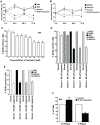
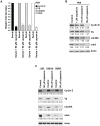
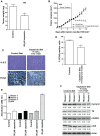
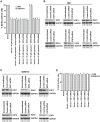
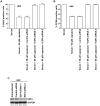

References
-
- Krug LM, Kris MG, Rosenweig K, Travis WD. Small cell and other neuroendocrine tumors of the lung; In: DeVita VT, Lawrence TS, Rosenburg SA, editors. Philadelphia: Lippincott Williams and Wilkins; 2008.
-
- Metro G, Cappuzzo F. Emerging drugs for small-cell lung cancer. Expert Opin Emerg Drugs. 2009;14:591–606. - PubMed
-
- Salgia R, Skarin AT. Molecular abnormalities in lung cancer. J Clin Oncol. 1998;16:1207–1217. - PubMed
-
- Minna JD. The molecular biology of lung cancer pathogenesis. Chest. 1993;103:449S–456S. - PubMed
-
- Minna JD, Kurie JM, Jacks T. A big step in the study of small cell lung cancer. Cancer Cell. 2003;4:163–166. - PubMed
Publication types
MeSH terms
Substances
Grants and funding
LinkOut - more resources
Full Text Sources
Other Literature Sources
Miscellaneous

